Art & Design Curriculum Offer
Learning
Intent
At HTP we believe that a high-quality art and design curriculum stimulates creativity and imagination, allowing children to express personal ideas and make emotional responses. Our art curriculum offers visual, tactile and sensory experiences as a way of understanding, exploring and responding to art forms. Sketchbooks are used across the school as a place to explore, experiment, discover, respond and reflect, providing a record of the children’s learning and progress in school. We aim for pupils to develop an understanding, appreciation and enjoyment of visual arts, being able to discuss their own and others ideas, inspiration or work using specific art vocabulary. We want to ignite a spark to inspire and engage our pupils to develop a life-long love of art and encourage a few aspiring artists on their journey.
Journey
Implementation
At Holy Trinity Primary School, we have designed a coherent, rigorous and sequential approach to art teaching which is guided by the National Curriculum. Our curriculum has included the designing of:
PROGRESSION OF SKILLS
Our progression of skills across the curriculum shows a clear progression in skills across year groups in the following areas:
- Recording
- Sketching and drawing
- Paint and colour
- Sculpture/3D work
- Collage and mixed media
- Printing
- Evaluating and responding
This enables children to develop their skills as they progress through the key stages, using mediums in different ways and with more skill and control. They will build on prior knowledge and learn new techniques and work with new medium. They use the same medium in different ways to create different effects and combine a range of medium.
VOCABULARY
We aim to develop the pupils’ use of art specific vocabulary when discussing art by creating a bank of art specific vocabulary relevant to key stages (EYFS, KS1, LKS2 and UKS2) and art topics being taught in our school. This means that children will use art terms and specific vocabulary to discuss medium, techniques, effects and the work of artists and build their vocabulary bank as they move up through the school, learning new vocabulary within each key stage relevant to art topics being taught.
SKETCHBOOKS
Sketchbooks are regularly used across all year groups as a tool to help facilitate the teaching of art. We use them as a place to record, experiment, practice, explore, collect, evaluate and review. Children will use sketchbooks in every year group to provide a record of their experiences in art. These sketchbooks are then taken with each child up through the school. Children’s art and outcomes improve due to time being given to use sketchbooks regularly to explore, improve and refine use of medium, materials and skills. Children collect, respond to and reflect on a range of stimulus or artist’s work as a starting point for their own art.
MEDIUM
Our curriculum provides opportunities for children to explore and experiment with a range of medium (including pencil, charcoal, chalks, pastels, paint, clay). Different mediums are used more than once to help develop a mastery of control and technique. This gives children the opportunity to be able to name a variety of medium used for their art. It also enables them to create different effects through using these mediums in different ways, with different techniques so that they are able to talk about these effects (i.e. blending, smudging, stippling, cross hatching).
As a result of this, children are able to discuss and compare a range a medium, deciding which to use and reasoning why and they are able to combine a range of medium for different purposes and effects.
Enriching the Art experience
We aim to enrich the children’s art experience in HTPS through a variety of art opportunities outside of the curriculum.
Local Competitions
Year Group Art Days
School-Based Art Projects
Future
Impact
PLANNING & OUTCOMES
At HTPS, art is planned to ensure high-quality provision using the school scheme of learning.
- It is planned in small steps to ensure necessary skills are being taught and demonstrated
- Small steps will allow for experimentation and exploration of new medium
- Monitoring of coverage and sketchbooks will ensure high-quality provision
- Teachers will feel more confident with the teaching of art through small step planning
- Children will experience a broad and balanced art curriculum including a range of skills, techniques, experiences and medium
- Outcomes in art will improve due to a better understanding of how different medium behave and how to create different effects using new skills and techniques which will be planned for
- Sketchbooks, planning and lesson observations will show evidence of high quality provision in the children’s learning
ASSESSMENT IN ART
Our art curriculum is assessed at the end of each unit, using our ‘Key Takeaways’, with children’s learning contributing to an overall termly assessment. Children are judged as ‘working at the expected standard’ of the year group (expected) or working below the expected standard (has not met).
Evidence of outcomes can be found through:
- Work produced in sketchbooks
- ‘Final pieces’ at the end of a unit
- Pupil discussion about their learning

